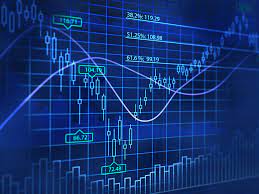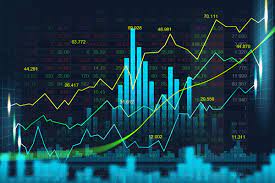Hello!
The forex market is one of the largest entities of its type anywhere in the world, with an estimated $6.6 trillion traded globally every single day.
 As you’d expect from a market of this size, this entity is also accessible 24 hours a day, with the market split across three different geographical sessions.
As you’d expect from a market of this size, this entity is also accessible 24 hours a day, with the market split across three different geographical sessions.
In this post, we’ll appraise the market’s fundamentals in greater detail, while asking when’s the best time to trade forex?
The Structure and Basics of the Marketplace
The three geographical trading sessions centre around the four primary forex exchanges in the world, which are based in London, New York, Sydney and Tokyo.
The London exchange and European trading session runs from 8am to 5pm GMT, while the New York alternative (and the North American market) opens at 1pm GMT before closing at 10pm.
 Interestingly, the Asian trading session is a little broader and more complex, not least because there are two major exchanges based in the vast Asia-Pacific region. The primary exchange is based in Tokyo, which is open between the hours of 12am (midnight) GMT and 9am five-days-a-week.
Interestingly, the Asian trading session is a little broader and more complex, not least because there are two major exchanges based in the vast Asia-Pacific region. The primary exchange is based in Tokyo, which is open between the hours of 12am (midnight) GMT and 9am five-days-a-week.
However, the Sydney exchange opens at 10pm GMT and closes at 7am, creating a scenario where the Asia-Pacific marketplace unofficially runs between the hours of 10pm and 9am overall.
It’s this session that sees the majority of the world’s major currency pairs traded, including the JPY/USD and the JPY/GBP. Other major currencies traded prolifically during this time include the Chinese yuan, the Russian Ruble and Australian dollar, with these assets also linked strongly by trade and international cooperation.
Also read: Best Email Marketing
When’s the Best Time to Trade and How to Optimise Your Orders
 As we can see, there are several periods where these individual markets overlap, with the most obvious example provided by the afternoon trading session in the UK.
As we can see, there are several periods where these individual markets overlap, with the most obvious example provided by the afternoon trading session in the UK.
At this time, there’s a four-year crossover between the hours of 1pm and 5pm GMT, where both the London and the New York exchange are open for business. This period typically sees trading volumes and volatility levels increase considerably, creating more marked price movements and greater opportunities for day traders to profit.
There’s another one-hour crossover between 8am and 9am GMT, as the European trading session gets underways and the Asia-Pacific market draws to a close.
This creates a smaller window of opportunity and volatility, so it may suit day traders with a slightly higher level of risk-aversion.
Also read:
- What is Day Trading System? How it Works? The Good and Bad of a Trading Systems
- Selling Your Used Hard Drives: Is it Safe?
- 5 Best Ways to Track My Old Cell Phone Number
 Of course, such crossover periods don’t always translate into profitability, particularly as there’s the potential to also lose more than your initial deposit. With this in mind, you need to experiment with various strategies that suit both your risk appetite and profit expectations, as this will help you to identify the best possible time to trade the market.
Of course, such crossover periods don’t always translate into profitability, particularly as there’s the potential to also lose more than your initial deposit. With this in mind, you need to experiment with various strategies that suit both your risk appetite and profit expectations, as this will help you to identify the best possible time to trade the market.
To achieve this, you should consider targeting trading platforms like the MetaTrader 4 which offers access to a demo trading account. These entities essentially simulate a real-time and corporeal market environment, enabling you to test and hone various strategies without risking your hard-earned capital.
Over a period of between three and six months, you can subsequently learn how to trade the market and time your orders to achieve the optimal impact!
Thank you!
Subscribe to our newsletter! Join us on social networks!
See you!






